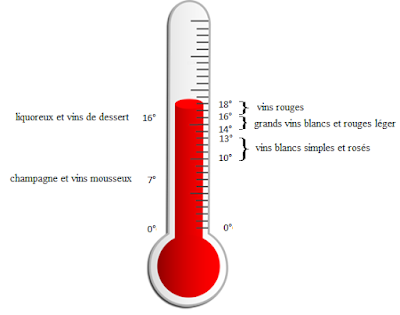Wine tasting, whether professional or amateur, must follow a few rules to take full advantage of it. What are the rules to know ?
I don't think I'm the only one that experienced this delicate moment when a friend makes you taste a wine and the only answer you can give is : "it tastes like wine". There was a time when I didn't understand everything about wine tasting.
But rest assured, you just need a nose, taste buds and a brain to taste a wine and recognize certain smells.
Tasting is above all to discover a sensation, an emotion. It's feeling things. The more wines you taste, the easier it will be to recognize certain aromas. As the french saying goes, "It is by forging that one becomes a blacksmith". Remember one thing during a tasting : sensations are born from our experience. Just because your table neighbor finds the aroma of acacia flowers in his glass doesn't mean you'll automatically feel the same way !
Be in good conditions for a wine tasting
External factors
To make a tasting in optimal conditions, you must avoid being influenced by external elements :
- The light : natural light is perfect.
- Table : put a white surface to hand for visual examination (tablecloth, sheet or towel for example)
- The noise : choosing a quiet place is important during a tasting.
- The smells : if possible, avoid putting on perfume or smoking on the day of your tasting, same advice for foods that are too strong like garlic or coffee.
- The wine glasses : the ideal is to use INAO glasses that are approved for official tastings. If you don't have one, you can choose other wine glasses as long as they are the same. When your wine glasses have been in a box or cupboard for a long time, think about washing them with a small amount of wine before you start your tasting.
*Aviner : pour some wine into the glass to rinse it
Personal factors
But the internal factors specific to the taster must also be taken into account.
- Health : there's nothing worse than having a cold on the tasting day. There is no more smell and the acidity is amplified.
- Digestion : Avoid making a tasting right after a hearty meal.
- Tiredness : I do not teach you anything, the senses are reduced when you have not had enough sleep.
Some rules to follow
For a tasting in the rules here is what I recommend.
- Spit out : using the spittoon will never be seen as a lack of politeness ! After five glasses of wine, your senses are already damaged by alcohol: every sip swallowed, you're going to enjoy wine less and less. And little more, you can take the car after your tasting.
- The time : if possible, organize your tasting in the morning so you don't have to be digesting (for your cellar visits for example).
- The number : taste a maximum of five wines. By dint of tasting, I realized that more than ten wines, I no longer had the same feelings.
- The order : there is a saying that goes " White on red, nothing moves, red on white all the hell ". There is nothing more false. The real sentence is "White then red, nothing moves, red then white all the hell ”.
- Even though there are exceptions, we run a tasting in this order:
White wine, then rosé wine, then red wine, then sweet wines. - Start with the youngest vintages and finish with the oldest to see the evolution of the wine,
- and from the simplest to the most complex.
- Even though there are exceptions, we run a tasting in this order:

- Wine serving temperature
The wine temperature plays a leading role in tasting a wine. Served too cold, the acidity will be heightened and the aromas will fade. Too hot, the wine will seem somewhat disgusting, overloaded with alcohol.
Classic white wines should be drunk between 10 and 13 degrees, light reds and great white wines between 14 °, 16° and 16 ° to 18 ° for full-bodied or old red wines.
Here are two types of tastings that you may encounter :
The Principle of Horizontal Tasting : Several wines of the same vintage and the same appellation are offered during the tasting. This helps to determine a trend, the general style of a terroir over a year.
The principle of Vertical Tasting : Several vintages of the same wine are offered for tasting. We start with the most recent vintage and end with the oldest. It is a true journey through time that allows us to appreciate the work of the winemaker over the years.
Read also :
- Learn to taste wine in minutes
- Tasting : what to watch in a wine ?
- Tasting : how to smell a wine ?
- Tasting : how to taste a wine ?
- Tasting : how to conclude a wine tasting ?
Do not hesitate to let me know your impressions of your experience in the comments. You can also follow your wine blog with Instagram.




